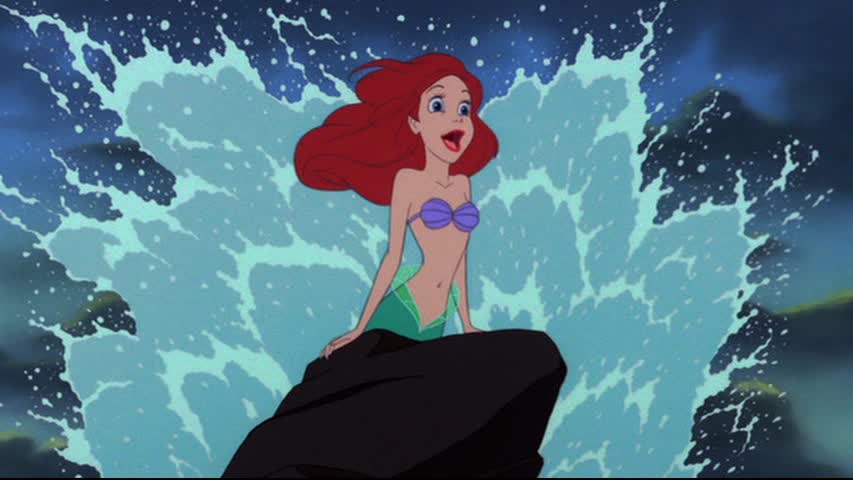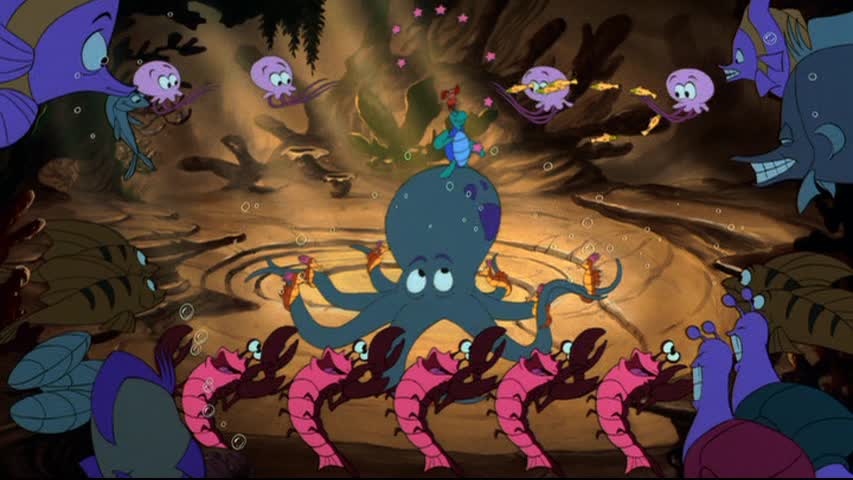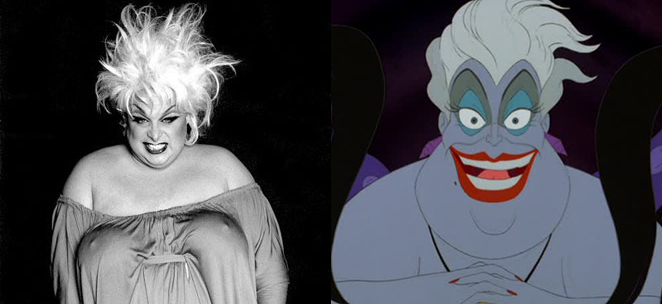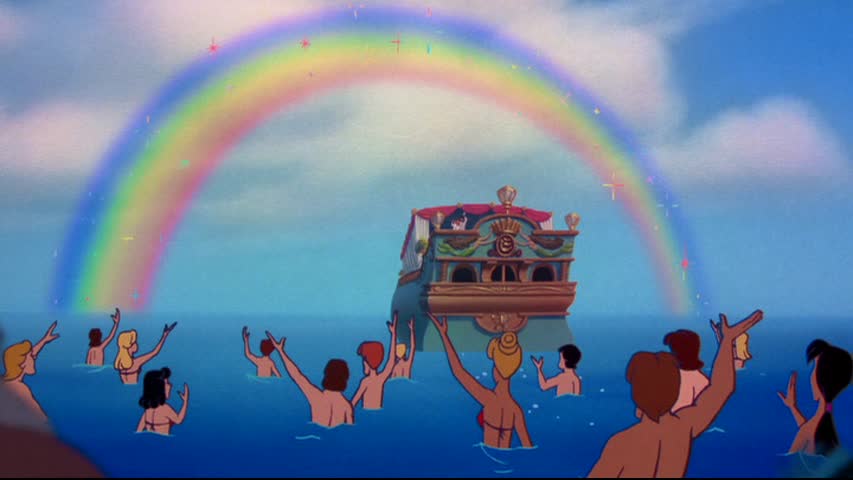 Tim here, to celebrate the silver anniversary of one of the most important films in the annals of American animation. 25 years ago today – some of you are going to have to brace yourselves, because you’re about to feel very old – Walt Disney Pictures released The Little Mermaid, in one fell swoop rewriting the landscape for family entertainment and animation alike.
Tim here, to celebrate the silver anniversary of one of the most important films in the annals of American animation. 25 years ago today – some of you are going to have to brace yourselves, because you’re about to feel very old – Walt Disney Pictures released The Little Mermaid, in one fell swoop rewriting the landscape for family entertainment and animation alike.
As hard as it is to believe now, once upon a time, Disney was an embarrassing underdog, whose theme parks were solely responsible for keeping its saggy movie division propped up. 1989 was only four years removed from the disastrous release of the pricey The Black Cauldron, and the takeover of the company by executives Michael Eisner and Frank Wells, who managed to stabilize the live action filmmaking division, while putting the animation studio under the command of Peter Schneider.
It was Schneider who managed an ambitious and terrifyingly foolhardy plan, concocted by Jeffrey Katzenberg to restore the luster of Disney animation after a generation or more of mismanagement, by releasing a new animated feature on an annual basis. The first film produced on that model was 1988’s Oliver & Company, a rock-solid hit, but hardly the triumphant return of Disney animation that everyone was hoping for. That came with the second film in Schneider’s plan, The Little Mermaid, and the rest is history.

Making $84 million in the U.S. alone, The Little Mermaid set a record as the highest-grossing fully-animated feature ever made, and continued the shift begun with the previous year’s Who Framed Roger Rabbit in encouraging American audiences and critics to think of animation as something that could be more ambitious and artistic than just the thing you drop your kids in front of for 80 minutes. More than just pulling Disney out of a financial tailspin, though, the true legacy of The Little Mermaid is the shadow it has cast over so many animated films in the quarter-century since its debut.
Disney has a reputation for making fairy tale musicals about princesses, but this is largely a modern invention: only three of the 27 Disney features preceding The Little Mermaid meet this description, while three of the next five released in its wake do. And so everything down to Tangled and Frozen is obliged to nod its head in thanks to The Little Mermaid’s proof that such films still had a constituency in the modern world. While that specific model has been only intermittently revived by other studios (though after Frozen’s enormous success, I’d be shocked if we don’t see a few attempts by other studios in the next several years), the reliable success of Disney’s fantasy musicals in the next several years re-established animation as a major commercial force, and led to rival studios starting up their own studios to compete. And here we are, and animation is one of the biggest economic forces in the Hollywood landscape.

As the film that served as the instigator for all of this, The Little Mermaid has an awful lot of historical importance to live up to. And of course, it does – if I’ve made it this far into a discussion of the movie’s impact without really saying a single word about the movie, that’s because I’m sure that most of you have seen it, and already know about the many, many things it does well. There are problems with it, sure: it has a blander male lead than any other Disney romance since the 1950s, and its gender politics are appalling on a level beyond just about anything else in the studio’s entire output. But set against that are some of the most extraordinary successes of any animated movie in history. The songs by Howard Ashman & Alan Menken make for one of the strongest of all original movie musicals, with one iconic tune after another (and Menken’s score is even better – easily my pick for the best in Disney’s 54-film canon). The villain, Ursula, is a mainstay on lists of the best movie bad guys ever, a deliciously over-the-top diva played by Pat Carroll with the ebullience of a showstopping drag queen (no surprise, then, that Divine was a major influence on Ursula’s design).

The Little Mermaid showcased a newly-forming generation of Disney animators in their great breakout moment. Even after the studio’s films throughout the ‘80s had restored a degree of lushness and visual ambition that had been largely abandoned in the decades following the costly Sleeping Beauty, there was still no precedent for the scope of animation showcased here, with its limitless world-building, and character designs that permitted an extraordinary range of facial expressions and acting (so useful was the facial design on Ariel, the little mermaid herself, that Disney has re-used it constantly throughout the years, especially her eyes; Tangled’s Rapunzel and Frozen’s Anna are very little more than three-dimensional renderings of Ariel’s facial structure). And it pointed to bolder futures yet: the film’s final scene was the demo for a new digital coloring system, CAPS, that would enable Disney’s output in the 1990s to be still more ambitious and complex.

But even as technology has left The Little Mermaid behind, it has aged gracefully into being one of the indisputable classics of its medium. The storytelling isn’t always flawless, but the mix of light comedy, action-adventure, and drama gives the film a ranginess and emotional heft that has been barely been matched anywhere else in animation, before or sense. The characters are fun to look at and vividly etched (outside of that grimly functional prince), the music is playful, dramatic, and catchy as all hell. 25 years later, the film hasn’t lost any of its charm, and it still stands head and shoulders above virtually all of the dozens and dozens of films which owe to it the entirety of their existence.